What tractors did farmers buy in 1949?
Diesel power was making its presence felt in 1949 as farmers invested some of their post-war prosperity in new equipment. Farmers Weekly takes a look at the leading tractors of the time.
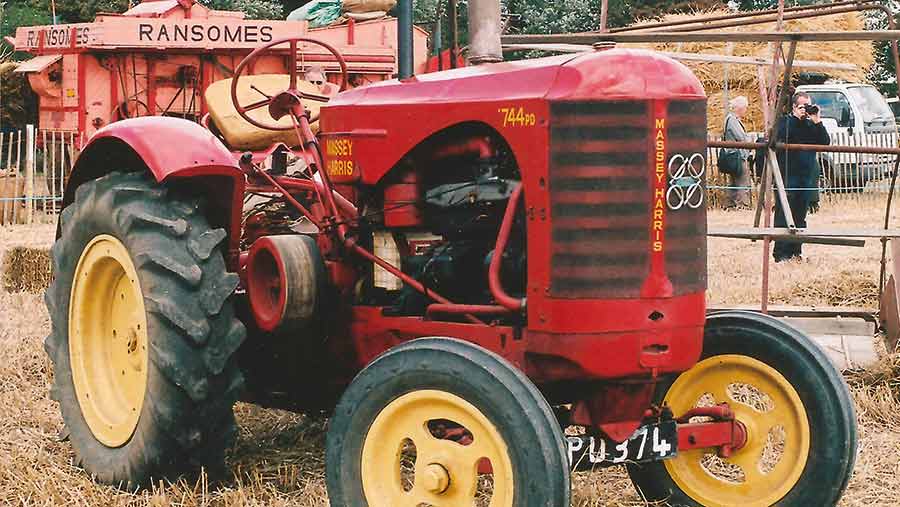
Massey Harris 744
UK farming fortunes were transformed during the Second World War as demand for home-produced food swept away the economic gloom of the 1920s and 1930s. And farming’s favoured status was officially confirmed in 1947 as the Agriculture Act promised continued cash support and provided confidence to invest for the future.
It was good news for UK tractor and machinery manufacturers, too. They enjoyed strong overseas demand with little competition from the rest of Europe, where rival companies were still recovering from wartime destruction.
See also: Farm tractor buying habits from 1971
In fact British manufacturers quickly became the world’s biggest tractor exporters and played a leading role in design improvements.
However, it was too early in 1949 for four-wheel drive to feature in design improvements, and farmers who needed extra pulling power still relied on crawler tracks. Driver comfort and convenience were still a long way down the priority list, too, but the new generation of diesel engines made rapid progress on British farms.
Benz and Marshall lead the pack
The first diesel tractor was made in Germany by Benz in 1923 using a two-cylinder engine. Seven years later Marshall tractors in Lincolnshire offered a single-cylinder two-stroke diesel engine. However these slow-revving and difficult-to-start machines posed no threat to the spark ignition engines that powered more than 99% of pre-1949 tractors.
The diesel breakthrough finally arrived in the late 1940s, with the six-cylinder Perkins P6 engine playing a major role. Developed as a truck engine in 1937, it was probably the most advanced high-speed diesel; it was easy to start, ran smoothly and was reliable.
Ford
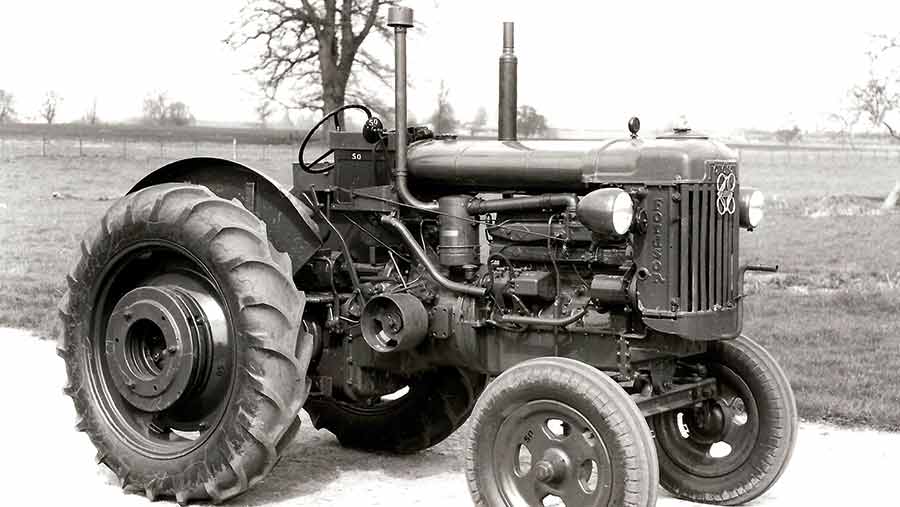
Fordson
Ford chose the P6 for its first diesel tractor model in 1948, offering it as an alternative to the 30hp spark ignition engine in its UK-built E27N Fordson Major. Fitting the Perkins engine boosted the output to 45hp but it also increased the price to £595 compared with £303 for the standard model.
The P6 also powered the first Massey-Harris diesel tractor. Some of the leading North American tractor companies opened UK factories in the late 1940s, and Massey-Harris was among them, starting production at their Manchester factory in 1948 with the 744 model.
Their American and Canadian built tractors were all petrol or petrol/paraffin fuelled, but they chose the Perkins diesel for their move into the UK.
Minneapolis-Moline
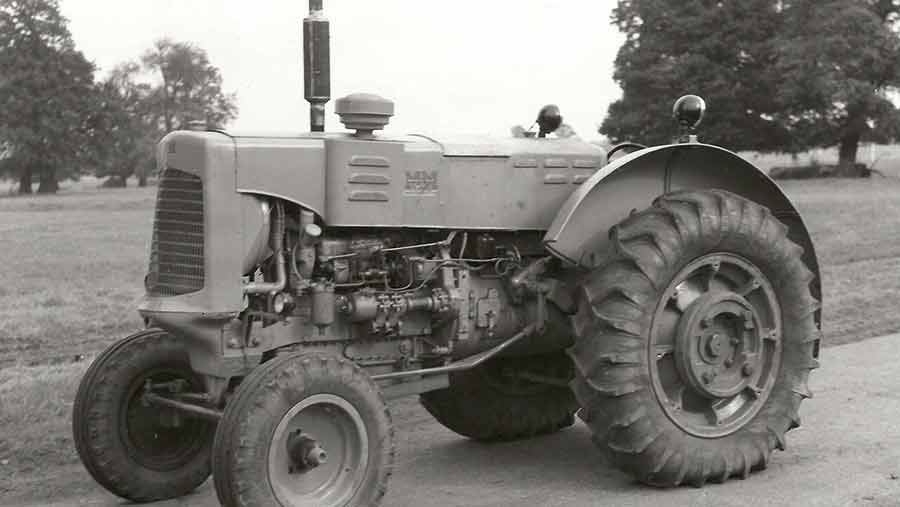
Minneapolis Moline
Another American arrival was Minneapolis-Moline, making a brief appearance in what was then the high horsepower end of the market. Their UDS model, with spark ignition for their home market, was assembled here from 1948 with two UK-built diesel options.
The price with the 46hp Dorman diesel was £1,050 and the Meadows version with 65hp rated output cost an eye-watering £1,200. The prices, with delivery at extra cost, help to explain why few UDS tractors were sold.
David Brown
The first David Brown diesel tractor was a Cropmaster model announced at the 1949 Royal Show and powered by a four-cylinder David Brown engine. The output was 35hp but at £625 the diesel model cost £150 more than a petrol/paraffin Cropmaster.
Turner
Another diesel newcomer was the Yeoman of England, the first tractor from the Wolverhampton-based Turner company. It was launched in 1949 with an engine with four cylinders in a V formation, a layout that made the cylinder heads bulge out of the engine compartment giving an impression of greater power than the engine’s 40hp output.
Field Marshall
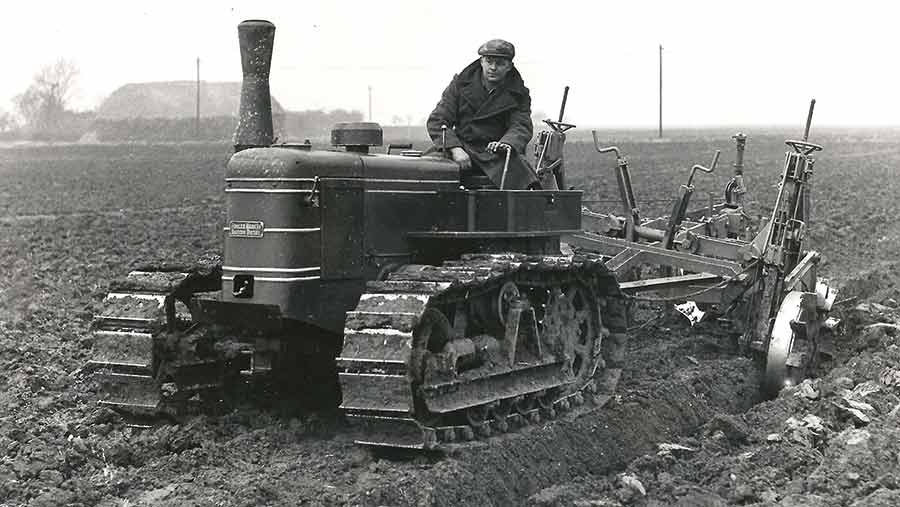
Field Marshall
Diesel enthusiasts were also offered the Series 2 version of the Field Marshall tractor with a two-stroke single-cylinder engine descended directly from the 1930 Marshall tractor. The 1949 price was £597. Since 1948 the same 40hp engine had also been available in the Fowler Mark VF tracklayer following Marshall’s takeover of the Fowler company.
Nuffield
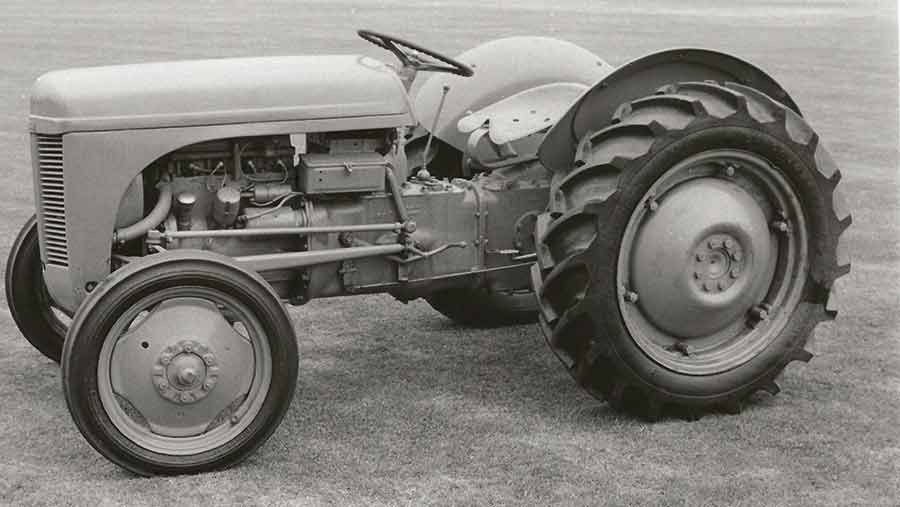
Ferguson TE-20
Two leading tractor companies that lacked a diesel model in 1949 were Nuffield and Ferguson. Nuffield production started in 1948 using a petrol/paraffin engine developed for a Morris Commercial World War 2 army lorry, but the first diesel model in 1950 used a four-cylinder Perkins engine.
Harry Ferguson was not a diesel enthusiast and his Little Grey Fergie tractors were petrol and paraffin fuelled until 1951 when a standard diesel engine was available. The Ferguson TE-20 series from the Banner Lane factory was one of the tractor industry’s biggest success stories, helped by Harry Ferguson’s price-cutting policy.
The enthusiasm for diesel power had even reached the fast expanding mini tractor sector. Small tractors, typically with a 10hp engine, were arriving in the late 1940s from newly formed companies with a high failure rate.
The tractors were often poorly designed and under-powered, and a major problem was price competition from the Ferguson selling in 1949 for £325 with a 24hp petrol engine.
Newman
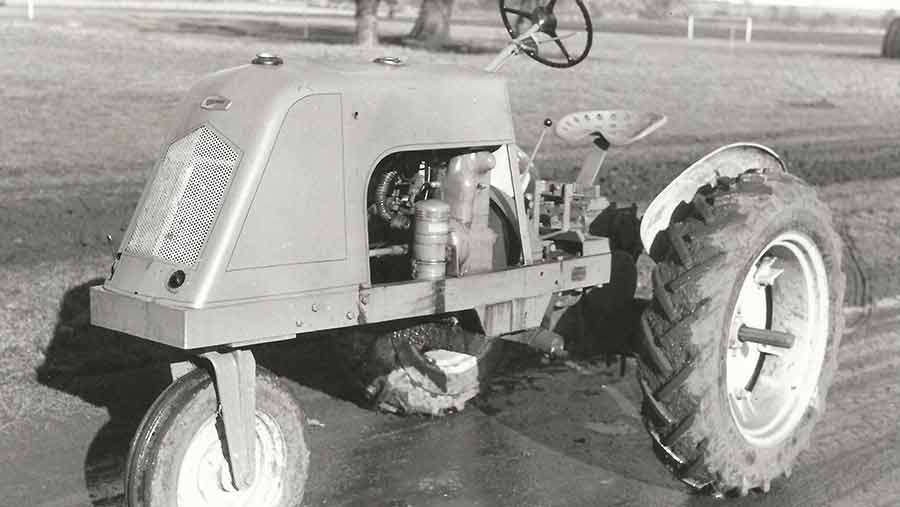
Newman WD2
Farmers looking for a small diesel-engined tractor had quite a range of options. A 1949 Newman WD2 three-wheeler, with a twin-cylinder, air-cooled Coventry Victor engine developing 12hp. The price was £339 compared with £240 for their basic petrol model.
Byron tractors were built in London, and the new Mk II model with a 10hp Ford petrol engine was available for £247. Another example from the mini sector was the OTA three-wheeler from Oak Tree Appliances. Their improved model in 1949 with a 10hp Ford petrol engine sold for £259 and was said to be able to plough 2.5 acres in a day.
Powersteer
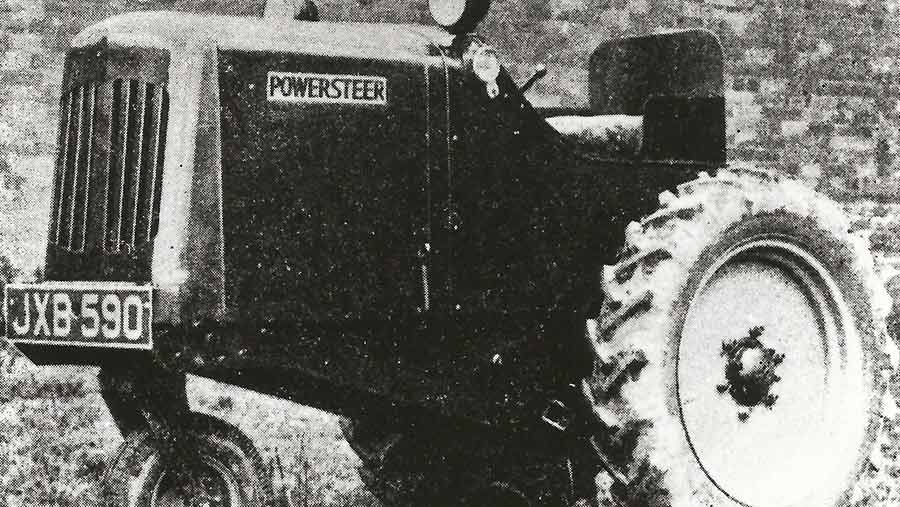
Powersteer
Probably the oddest of the 1949 mini tractors was the Powersteer three-wheeler from London with the popular 10hp Ford petrol engine. It lacked a steering wheel, and the single front wheel swivelled freely with a caster action.
The skid type steering system developed for tracklayers was operated by levers, speeding up one rear wheel to slew the front of the tractor to the left or right – which must have been hazardous in traffic. The price was £300 and production apparently lasted less than a year.

